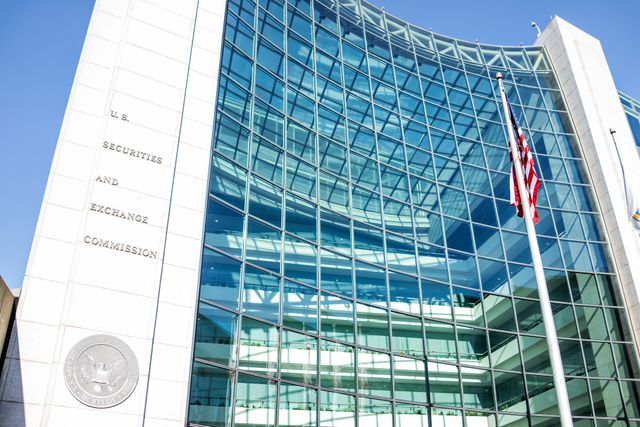The SEC’s long-awaited climate disclosure rules were adopted yesterday. A more detailed discussion of the new rules will follow. In the meantime, in this post, we provide some initial thoughts on the rules. To join our March 11, 2024 webinar discussing the new rules, register here.
The rules largely are a win for issuers
The SEC scaled back, or jettisoned in their entirety, many of the more controversial aspects of the proposed rules. For example:
- Scope 3 emissions disclosures are gone.
- Scope 1 and 2 emissions disclosures are now subject to materiality, and only required for larger companies (accelerated filers and large accelerated filers). The Adopting Release states that “materiality is not determined merely by the amount of these emissions. Rather, as with other materiality determinations under the Federal securities laws and Regulation S-K, the guiding principle for this determination is whether a reasonable investor would consider the disclosure of an item of information, in this case the registrant’s Scope 1 emissions and/or its Scope 2 emissions, important when making an investment or voting decision or such a reasonable investor would view omission of the disclosure as having significantly altered the total mix of information made available.” Staying on emissions disclosures, GHG intensity metrics are no longer required to be provided and registrants have been given more time to provide GHG emissions disclosures (with the second quarter 10-Q).
- Financial statement footnote disclosures have been limited to severe weather events and other natural conditions, and in some cases carbon offsets and RECs.
- Many of the other disclosures contemplated by the final rules are expressly tied to materiality, including those relating to scenario analysis, targets, goals, transition plans, internal carbon price and some of the financial statement footnote disclosures.
- Board oversight disclosures are less prescriptive.
- Reasonable assurance on emissions disclosures has been pushed out to fiscal 2033.
The rules are a mixed bag for investors
For institutional investors, the rules are an improvement over voluntary sustainability disclosures, since climate disclosures will have greater consistency and comparability. Many institutional investors will bemoan the exclusion of a Scope 3 emissions disclosure requirement, although there are divergent views in the investor community regarding the usefulness of that information.
The rules also a mixed bag for audit firms and software providers
The final rules take a chop at some of the revenue opportunities for these providers. There is a generous phase-in before assurance of GHG emissions data is required. Large accelerated filers will be required to obtain limited assurance over Scope 1 and 2 data beginning with fiscal 2029. For accelerated filers generally, limited assurance will kick in starting with fiscal 2031.
In addition, a smaller subset of companies will need to obtain reasonable assurance over their Scope 1 and 2 emissions disclosures, and there will be an even longer runway before that is required. Reasonable assurance only will be required for large accelerated filers, and then only starting for fiscal 2033 as earlier noted. Emerging growth companies, smaller reporting companies and non-accelerated filers will not be required to provide GHG emissions data and therefore will not have an assurance requirement.
Since the rules are limited to Scope 1 and 2, collection and calculation of emissions data will not be as complex or comprehensive as under the proposed rules.
Materiality – great in principle, harder to apply in practice
As noted above, many of the disclosures contemplated by the final rules are expressly tied to materiality. That’s great in concept, since it will enable registrants in many cases to exclude disclosures they determine to be immaterial. On the flipside, registrants will need to go through the exercise of assessing materiality, which is sometimes easy but other times much harder. In addition, there is the risk that investors or the SEC will disagree with a registrant’s assessment, that it will be out of synch with the market or that it will be wrong in hindsight.
Investors will want what they want
We expect some stewardship teams to continue to push for climate disclosures beyond what is required by the rules. Therefore, many registrants will continue to face pressure to provide more expansive climate disclosures than are required by the SEC.
Location, location, location
Many registrants already provide voluntary climate-related disclosures that go well beyond the requirements of the SEC’s new rules. These include, for example, disclosures on websites and in sustainability reports, stand-alone TCFD reports and CDP reports. Robust voluntary disclosures will undoubtedly continue to be made. In addition, under other regimes, larger companies will be required to make climate disclosures that go further than SEC requirements. In some cases it will be difficult for registrants to navigate the dividing line between what should go in their SEC filings and what should only sit elsewhere.
The SEC’s climate rules may not matter that much for larger companies
For many large companies, the final SEC climate requirements may not be perceived as particularly burdensome or additive, since they will not meaningfully increase the work these companies are otherwise doing and the disclosure they are otherwise publishing, either voluntarily or pursuant to other requirements. As noted above, in many cases, these other disclosures will be more extensive than those required by SEC rules.
Now the real fun begins
A petition for review challenging the new rules has already been filed in the 11th Circuit, and it’s likely there will be other challenges. Some of the challenges that will be brought were noted in the statements made by the dissenting Commissioners, including that the rules do not meet procedural requirements under the Administrative Procedure Act and that they are outside of the SEC’s authority. In addition, if there is a Republican administration next year, expect efforts to scrap or scale back the rules.
There must be a better way
The climate risk disclosure rules have been controversial from the start. Putting aside the merits of the various positions, what the rules should say and even whether there should be rules, there needs to be a better approach to developing public company disclosure requirements. The Commissioners and SEC staff are to be commended for their hard work. However, the process seems broken when a disclosure rule requires three years and a door-stopping 886 page Adopting Release.
Subscribe to Ropes & Gray Viewpoints by topic here.
About our practice
Ropes & Gray has a leading ESG, CSR and business and human rights compliance practice. We offer clients a comprehensive approach in these subject areas through a global team with members in the United States, Europe and Asia. Senior members of the practice have advised on these matters for more than 30 years, enabling us to provide a long-term perspective and depth and breadth of experience that few firms can match. For further information on the practice, click here.
Stay Up To Date with Ropes & Gray
Ropes & Gray attorneys provide timely analysis on legal developments, court decisions and changes in legislation and regulations.
Stay in the loop with all things Ropes & Gray, and find out more about our people, culture, initiatives and everything that’s happening.
We regularly notify our clients and contacts of significant legal developments, news, webinars and teleconferences that affect their industries.




